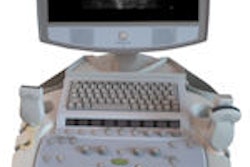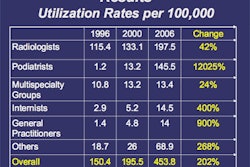Ultrasound is a sensitive and specific test to detect ileocolic intussusception, the most common cause of intestinal obstruction among children and one of the most common abdominal emergencies in pediatrics. But how reliable is this diagnostic test if pediatric sonographers and pediatric radiologists aren't available to perform the procedure?
Very reliable, according to radiologists from the University of Michigan Health System in Ann Arbor, who conducted an analysis of seven years of experience by medical staff using sonography to diagnose or rule out intussusceptions in pediatric patients under the age of 10. With a large proportion of 814 examinations performed and interpreted by general radiologists and residents, the procedure was almost 100% accurate in diagnosing or ruling out intussusception, according to a study published in the October issue of Pediatric Radiology (2009, Vol. 39:10, pp. 1075-1079).
The radiology department of University of Michigan Health System instituted ultrasound as a primary diagnostic test for pediatric intussusceptions in January 2001, and initiated a training program among ultrasonographers, radiology residents, and referring physicians. The hospital did not hire dedicated pediatric sonographers for weekday procedures until 2005.
Referrals from emergency department physicians, pediatricians, and pediatric surgeons was initially low, with only 55 procedures ordered in 2001. By 2003, the number had almost doubled to 106 procedures, and steadily increased, with 176 procedures performed in 2007.
One hundred twelve, or 13.8%, of the 814 examinations were interpreted as positive for intussusceptions. Of these, 96 cases were confirmed by enema, one was confirmed by surgery, and 15 were false positive, according to lead author Dr. Anastasia I. Hryhorczuk. Seven hundred exams, or 85.9%, were interpreted as negative, but in 27 cases, the patient also had an enema for further evaluation. For all but two cases, the enema supported the findings of the ultrasound exam.
The two remaining cases were interpreted as nondiagnostic, secondary to overlying bowel gas. These children were ultimately diagnosed as having constipation.
Overall sensitivity was 97.9%, the specificity was 97.8%, the positive predictive value was 86.6% and the negative predictive value was 99.7%.
An unexpected benefit of 117 negative ultrasound exams, or 14.4% of the total, was the discovery of additional clinically relevant findings, according to the authors. These included appendicitis, a fluid-filled bowel with an appearance suggestive of necrotizing enterocolitis, and hydronephrosis with ureteropelvic junction obstruction.
Related Reading
Ultrasound differentiates causes of abdominal pain in kids, October 4, 2002
Copyright © 2009 AuntMinnie.com



















